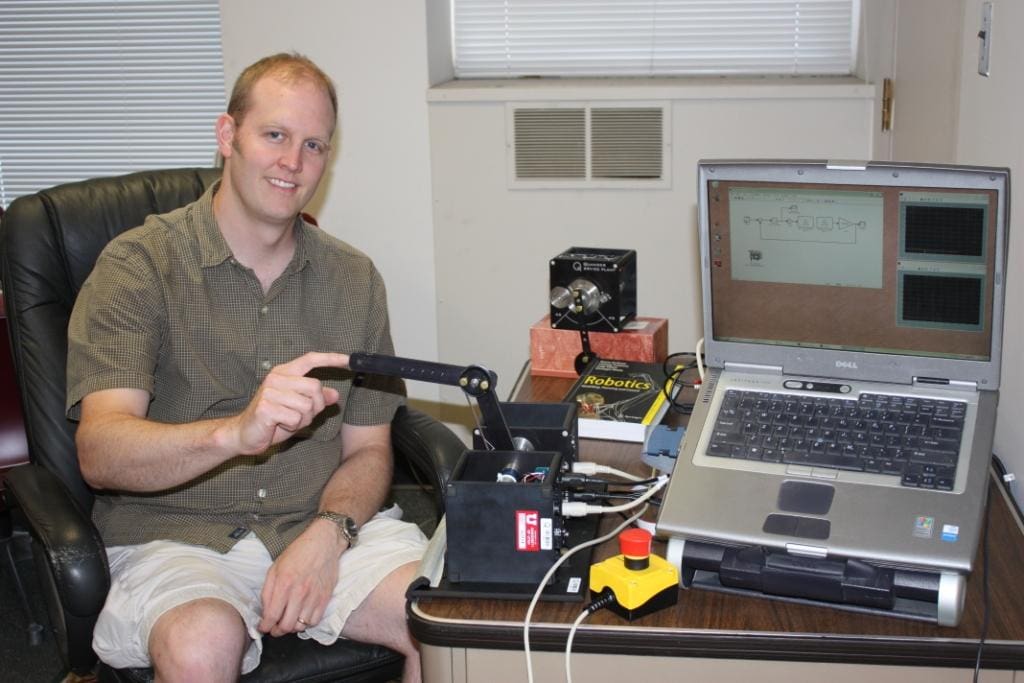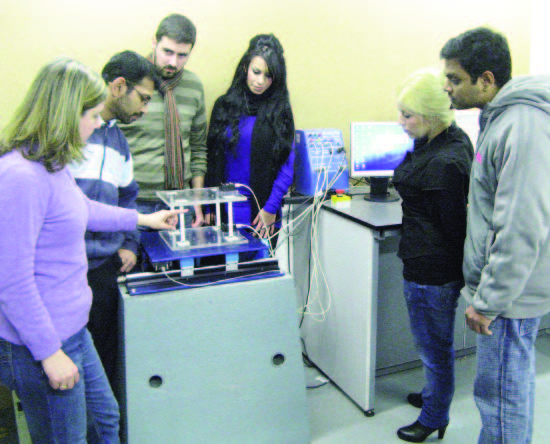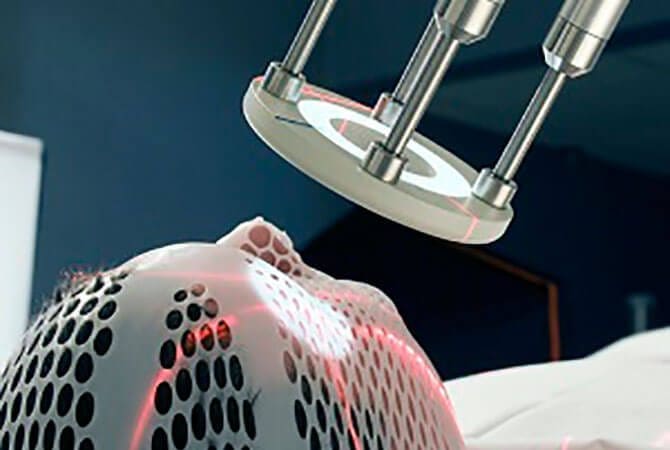
Dr. Stephen Mascaro of the University of Utah modestly considers himself a roboticist and a “jack of all trades”. An Assistant Professor in the Mechanical Engineering department, he divides his time between teaching and research. One of his most intriguing research activities is his Fingernail Sensing Project, which seeks to unobtrusively measure human touch forces at the fingertips. This would enable more natural studies of human grasping, and ultimately enable human-robot interaction that has robots intuitively understanding and responding to human needs.
Dr. Mascaro’s passion for research is matched only by his passion for teaching. He currently teaches courses in robotics, mechatronics and control at both the undergraduate and graduate level. His focus on instruction is what brought him together with Quanser.
Challenge
Ensuring all students gain sufficient, hands-on experience in the classroom
Dr. Mascaro wanted the students in his Robotic Control course to gain hands-on experience controlling a real robot. But his lab had only one very large, unreliable 2 DOF robot for the students to work with. Scheduling time for the students to use that single robot was a problem – made worse whenever the robot broke down and required repairs.
“I really wanted a different teaching model. Rather than using one large, expensive and mechanically unreliable robot, we needed several smaller, affordable and reliable robots, says Dr. Mascaro. “These additional robotic teaching tools could be useful for other courses, because my Robotic Control course is just one of many that we teach here.”
Since they did not have the time or resources to properly build their own robots, Dr. Mascaro’s challenge was to find a versatile, reasonably-sized hardware set that would allow all of his students to get hands-on experience in controlling real robot arms. Of course it had to be done in a cost-effective way.
Funding was another challenge. A prime funding source was their internal B.E.E.F. (Base Engineering Equipment Fund) grants, which exist to help any engineering faculty at the University of Utah “beef up” the equipment in their laboratory. Grant-awarding criteria included the ability to share the newly-acquired equipment with other courses, and the agreement of the partner company, Quanser in this case, to match at least 50% of the grant in some way – perhaps as an in-kind contribution.
Solution
Modularity, flexibility and collaboration - a powerful combination
A Quanser Academic Solutions Specialist had previously made a presentation at the University of Utah. “No one else had a product line quite like yours,” says Dr. Mascaro. “I especially liked the idea that you could buy some basic rotary servo modules – SRV02 base units – that could then be reconfigured and have various modular add-ons attached.”
A high degree of modularity is welcome, from both the instructors’ and administrators’ point of view. “If we invested in versatile, high quality hardware, we could then use it for a number of different courses in control systems and in robotics. They would serve more students and allow instructors to vary levels of complexity for different courses.” Equally welcome was the modules’ build quality; they were quite capable of standing up to active use by enthusiastic students.
“I really liked the diversity of Quanser’s rotary control modules and add-ons, but the one thing I didn’t see at that time was a small, reconfigurable, two-degree-of-freedom serial robot. I saw dedicated as well as module-driven parallel robots among Quanser’s products, but not serial robots. And that was something I wanted for my robot control class to demonstrate certain dynamic principles.”
Thinking outside the box, Dr. Mascaro suggested Quanser’s in-kind contribution to fulfill the B.E.E.F. grant requirements could be a new product – a serial robot formed out of rotary SRV02 base units. “I noticed that Quanser already had some add-ons that allowed you to combine two SRV02s in parallel, so I thought why not combine them in series?”
Dr. Mascaro collaborated with Quanser’s engineers to design a new 2 DOF serial robot. It was successfully implemented in his course for the first time in the Spring of 2011. The new robot is used in half a dozen different robotics and control courses and gives hundreds of University of Utah mechanical engineering students more and better hands-on experience in designing and implementing controllers. Some of the students went even further and added to the collaborative process: after working with the new serial robot in class, they suggested improvements and Quanser’s engineers were very receptive to their feedback.
Result
Delivering superior instruction and recruitment
Dr. Mascaro is proud of what the robot control lab can offer his students. “We now have a modern robotics lab that can provide all our students plenty of hands-on time with the robots so they can better turn control theory into practice. They’ll be better prepared to tackle real-world applications and research in the future.”
The lab is a powerful recruitment tool as well. “When new students come in and we talk to them about the great Robotic Track available at the University of Utah, they can easily see the full potential of the program. Our lab is now capable of giving students serious hands-on experience with the robots and controllers, and that’s a great recruitment advantage.”
Dr. Mascaro found his experience with Quanser to be extremely positive and valuable. “Working with Quanser has proven to be a remarkably rewarding collaborative experience for us. Your engineers did a good job of listening to my ideas and finding more efficient ways of incorporating them.” The collaboration has led to creative solutions in the recent past and could very well lead to additional co-operative and creative teaching solutions in the future.



